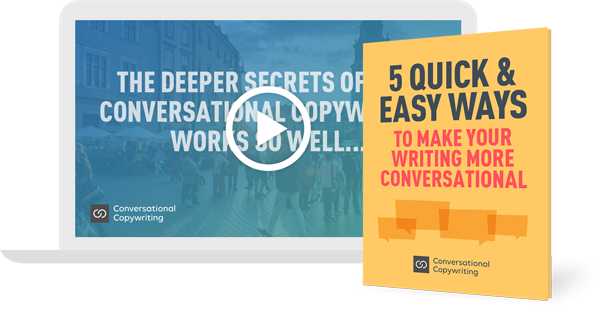
When we were children we knew how to connect with others through the use of simple language and a smile or two.
And then we had that ability educated out of us.
Our high-school teachers taught us how to write in fancy sentences.
At university we learned even more exotic words and sentence structures.
When we started working in an office, we were exposed to all kinds of business jargon and other nonsense.
And somewhere along the way we lost the ability to communicate simply and clearly.
Business jargon is the biggest offender…
Here’s a question for you…
“What’s your core competency?”
Hmmm… that’s a fancy way to ask a simple question.
You need to pause for a moment and translate it… from business jargon into everyday language.
What I’m actually asking you is this…
“Tell me what you do best.”
A much simpler sentence. One-syllable words. Every one of them.
Now imagine I want to get close to you and earn your trust.
Which way of asking the same question is going to do that for me?
“What’s your core competency?” or “Tell me what you do best.”
The core competency question creates a barrier. It’s like you’re being asked a trick question at a job interview.
But being asked what you do best sounds more like part of conversation with a new friend over coffee.
Jargon creates distance. Everyday language brings us closer.
Words really matter when you’re trying to connect with people.
When you write to an audience, you’re more likely to engage with them on a personal and emotional level if you forget the jargon and the marketing speak.
Understand exactly who you’re writing to, and then talk to them as if you were having that chat over coffee.
In the words of David Ogilvy:
“If you’re trying to persuade people to do something, or buy something, it seems to me you should use their language, the language they use every day, the language in which they think.”
I particular like that last part, “…the language in which they think”.
When we think about stuff in the privacy of our own minds, we don’t think in long, compound sentences. We don’t spout marketing jargon at ourselves.
Yes, we use words when we think. And yes, we think in sentences.
But we use short words and simple sentences.
Do the same when you’re writing your marketing materials.
Use everyday language.
Just like David Ogilvy suggested.

Beautiful. Our words truly matter. Thank-you, Nick.
Nick, thanks for reminding us to use clear and simple language in our writing. It is more engaging. It flows better. It is more persuasive. And it helps to build trust with the reader. Your Conversational Copywriting course has helped me to be a better writer. I have moved away from academic and business language. My goal is always to make my writing simpler and to focus on my reader’s needs. It takes more time to write in this style, but it is well worth the time invested.
Many thanks for the kind words, Lee. I’m glad you found the course helpful!
Thanks Nick. Your article gave great advice for communicating clearly and simply. Now, if only I could apply the advice naturally. I’ll have to practice a lot and just maybe it will become so.
I’ve been writing professionally for 40 years now, and I’m still working on it. : )